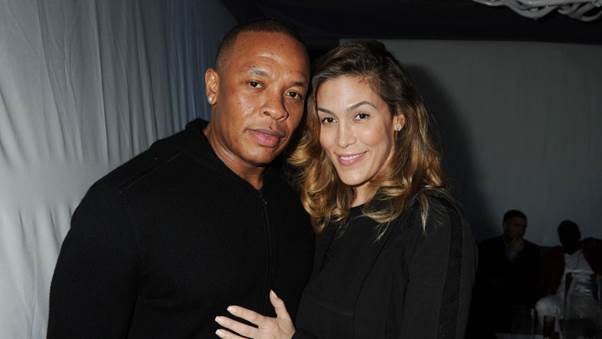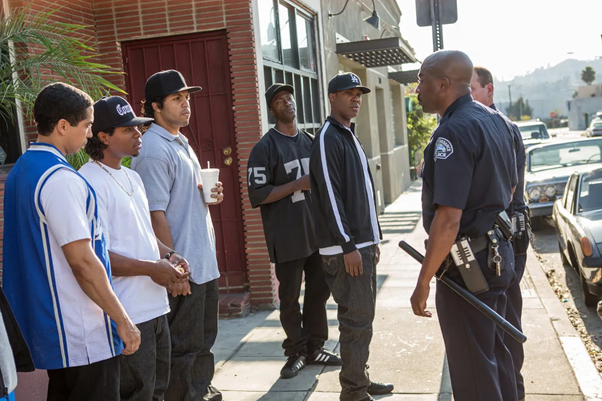In the high-stakes arena of celebrity divorce, where fortunes are vast and lifestyles are meticulously crafted, the legal battle between music mogul Dr. Dre and his estranged wife, Nicole Young, has emerged as a definitive case study. It is a drama that transcends mere gossip, offering a stark, unvarnished look into the economics of ultra-wealth, the legal intricacies of marital dissolution, and the breathtaking cost of maintaining a life among the global elite. At the heart of this spectacle is a figure that defied belief: Nicole Young’s request for $2 million per month in temporary spousal support. This was not a mere opening salvo in a negotiation; it was a detailed manifesto of a lifestyle befitting the wife of a billionaire, a comprehensive breakdown that laid bare the financial architecture of their existence. To understand this request is to understand the complex interplay of law, luxury, and power.

The Foundation of a Fortune: Understanding Dr. Dre’s Net Worth
Before dissecting the monthly expenses, one must appreciate the colossal financial landscape from which this request springs. Dr. Dre’s journey from N.W.A. pioneer to billionaire entrepreneur is the stuff of modern legend. His net worth, estimated to be between $800 million to $1 billion, was not built on music royalties alone.
- The Beats By Dre Windfall: The cornerstone of his wealth was the 2014 sale of Beats Electronics to Apple Inc. for a staggering $3 billion. As a co-founder, Dre’s share was reported to be in the vicinity of $500 million, a transformative event that catapulted him from wealthy artist to business titan.
- Aftermath Entertainment and Royalties: His record label and his iconic productions for artists like Eminem, 50 Cent, and Snoop Dogg generate tens of millions annually in enduring royalties.
- Ongoing Apple Partnership and Other Ventures: His ongoing role as an executive at Apple, along with various endorsements and investments, provides a steady, massive influx of income.
This context is critical. Nicole Young’s legal team argued that the marital lifestyle was funded by this billion-dollar empire. Their request was not based on average costs but on the established standard of living enjoyed during their 24-year marriage—a standard funded by one of the most successful entertainment business exits in history.
Deconstructing the $2 Million Monthly Blueprint
Nicole Young’s filing was remarkable for its specificity. It was not a round number pulled from thin air but a meticulously itemized account of their monthly expenditures. This breakdown served two purposes: to justify the need for support and to establish a baseline for the lifestyle she expected to maintain throughout the divorce proceedings.
Here is a detailed analysis of the major expense categories that constituted the $2 million request:
1. The Sanctum: Housing and Property Maintenance ($336,465)
The couple’s real estate portfolio was not merely a collection of homes; they were compounds, requiring armies of staff and constant upkeep.
- Primary Residences: This included costs for their main homes, most notably a legendary 20,000-square-foot mansion in Pacific Palisades and a sprawling Malibu estate. The monthly mortgage, insurance, and property taxes alone amounted to over a quarter of a million dollars.
- Staff and Security: A lifestyle of this magnitude cannot function without a dedicated team. The budget included salaries for a full-time chef, multiple house managers, estate keepers, and a 24/7 security detail. This was non-negotiable, given Dr. Dre’s high profile and the couple’s status.

- Utilities and Maintenance: The cost to heat, cool, and maintain tens of thousands of square feet of luxury property, including pools, home theaters, gyms, and sprawling gardens, is astronomical. The monthly utility bills were likely higher than the median American annual income.
2. The Entourage: Staff and Personnel ($314,755)
This category extended beyond estate staff to include the personal aides that facilitate a seamless, demanding life.
- Personal Assistants: Multiple assistants to manage complex schedules, travel, correspondence, and the myriad details of their professional and personal lives.
- Beauty and Wellness: This included a personal hairstylist, makeup artist, and trainers—services used frequently for both daily upkeep and the constant public appearances required of their station.
- Childcare: Though their children are adults, the filing highlighted past costs to establish the level of care that was standard for the family.
3. The Fleet: Transportation and Travel ($246,006)
Mobility for the ultra-wealthy is a category unto itself.
- Automotive Fleet: Lease payments, insurance, and maintenance for a collection of high-end vehicles, including multiple luxury SUVs and sports cars.
- Private Aviation: This is arguably the single greatest symbol of their lifestyle. The cost to charter private jets for business and personal travel—a necessity for Dre’s career and the family’s mobility—runs into the hundreds of thousands per month. A single round-trip flight on a private jet can easily exceed $100,000.
4. The Image: Personal Care and Apparel ($144,395)
Maintaining the public image of a billionaire’s wife is a costly endeavor.
- Wardrobe: This included the constant acquisition of high-fashion clothing, custom designs, shoes, and accessories from designers like Chanel, Hermès, and Gucci. A single outfit for a major event can cost tens of thousands of dollars.

- Beauty and Spa: Regular appointments at the most exclusive spas, dermatologists, and wellness retreats were considered essential monthly expenses, not luxuries.
5. The Gray Area: “Miscellaneous” and “Cash on Hand” ($408,893)
This was the most controversial category. It included hundreds of thousands of dollars labeled simply as “miscellaneous” and a hefty allocation for “cash on hand.” Her attorneys argued this was for unanticipated expenses, gifts, charitable donations, and the general liquidity needed to navigate their complex life without financial friction. Critics saw it as a bloated padding, but in the world of extreme wealth, such fluid cash reserves are often standard.
The Legal Chess Match: The Strategy Behind the Request
This request was a powerful legal instrument, not just a list of desires.
- Establishing the Marital Standard of Living: In California, a community property state, spousal support is calculated based on the “marital standard of living.” By presenting such a detailed breakdown, Nicole’s team was setting a very high bar for what that standard entailed. It forced the court to acknowledge that “normal” expenses for this couple were orders of magnitude beyond typical cases.
- Leverage for Settlement: Such an audacious request puts immense pressure on the opposing party to settle. Facing the prospect of a court order to pay millions monthly during a protracted legal battle, many individuals would seek a quicker, albeit expensive, global settlement.
- Covering Legal Costs: High-net-worth divorces are legal wars of attrition. The legal fees for both sides can soar into the millions. A high temporary support order ensures one party has the financial firepower to fund their legal team against a billionaire opponent.

Dr. Dre’s Counterargument: A Dispute Over Reality and Need
Dr. Dre’s legal team predictably contested the request vigorously. Their arguments likely centered on several key points:
- Inflation of Expenses: They argued that the stated costs were exaggerated or included expenses that were not “reasonable” or necessary for temporary support.
- Separate Property vs. Community Property: A central tenet of Dre’s argument was that the Beats sale—the source of the majority of his wealth—was based on his “genius and fame” acquired before the marriage, and thus the proceeds should be considered his separate property. This is a complex legal argument that would drastically affect the final division of assets and support calculations.
- Capability to Earn: They may have argued that Nicole, an attorney and successful businesswoman in her own right who had been instrumental in building the Beats brand, had the ability to support herself.
The Resolution and Lasting Implications
While the final terms of their divorce settlement remain confidential, the case was ultimately settled. The public spectacle of the $2 million request undoubtedly played a role in driving both parties to a private agreement.
The legacy of this case is its sheer educational value. It provides the public with an unprecedented, granular view into the fiscal reality of the top 0.001%. Nicole Young’s expense breakdown became a cultural document, a detailed map of what a billion-dollar lifestyle actually costs on a monthly basis. It underscored that in divorce law, “need” is a relative term defined by the context of the marriage. For Nicole Young, needing $2 million a month was not an expression of greed; in the courtroom, it was presented as a simple statement of fact—the financial requirement to sustain the life she had known for nearly a quarter of a century. It was the price of a legendary lifestyle, itemized.

